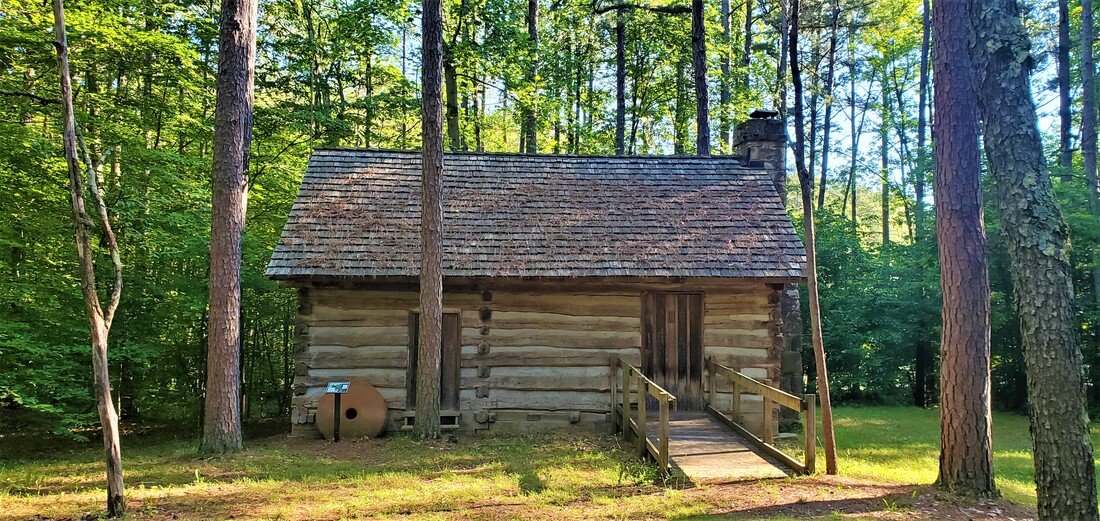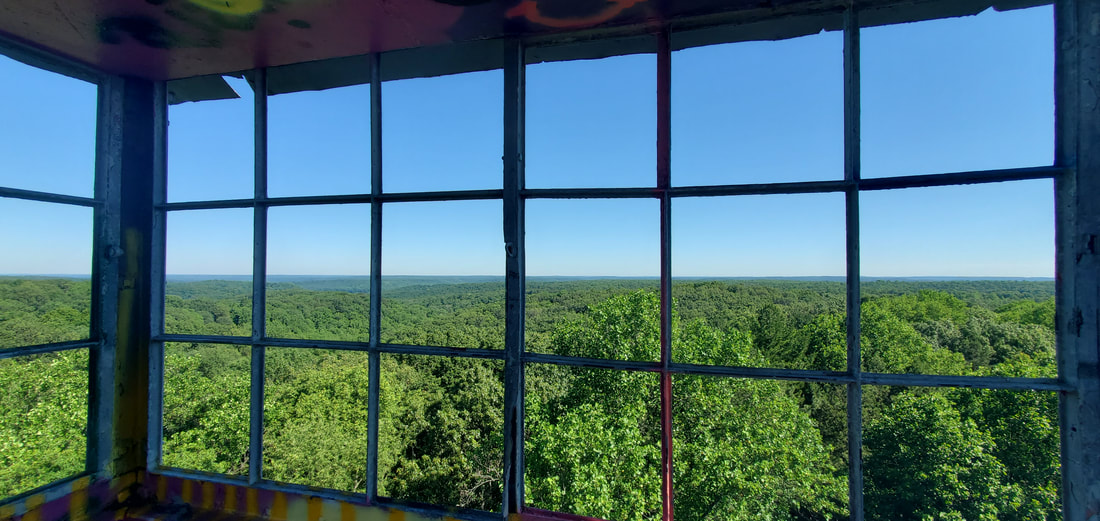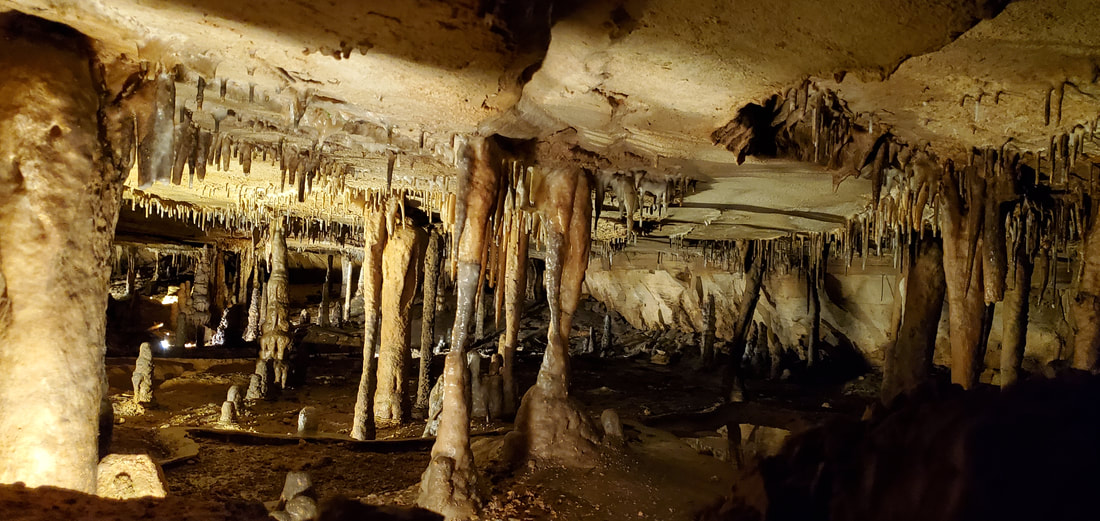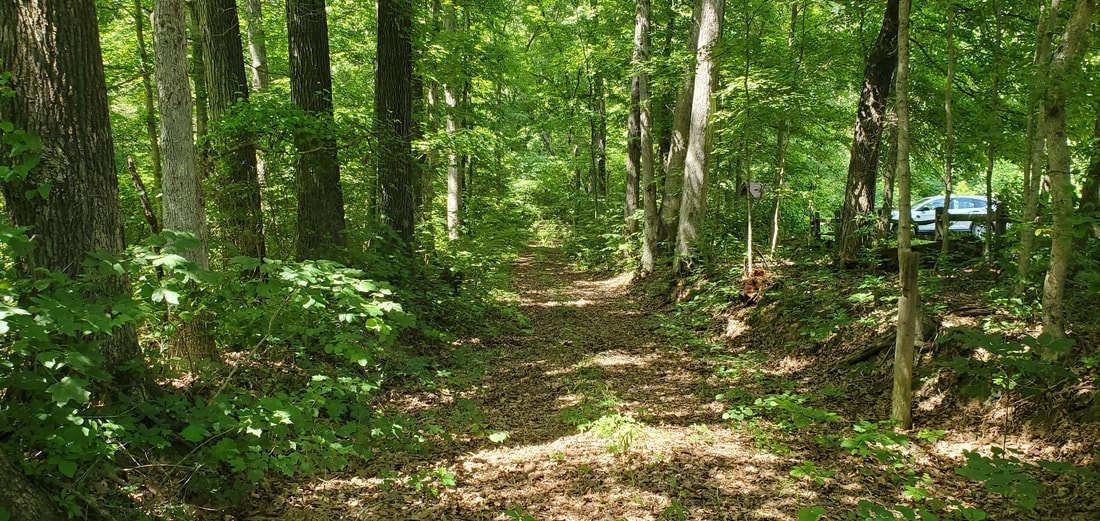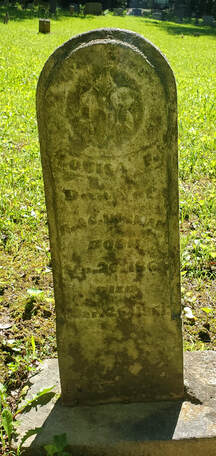We step aside and listen, not for anything present, but for what’s long gone: hooves pounding the soil and raising a dust that strings along to the horizon. Snorts and grunts and bleats bellowing past.
We find ourselves at a crossroads of past and present, hiking alongside the Buffalo Trace in the Hoosier National Forest in southern Indiana. When bison still roamed freely, they rushed along this path after crossing the Ohio River at a shallow ford each spring and dispersed through western Indiana and Illinois. In the fall they retraced the path back to warmer Kentucky grasslands. Their weight and numbers pummeled and pressed the pathway into the gullied depression still visible in parts of the forest.
* * *
The Hoosier National Forest covers 203,000 acres of south-central Indiana. In a state known for flat, sprawling corn fields and long straight roads, the forest landscape rises and dips from the Ohio River valley to just south of Bloomington.
The forest, largely a second-growth replanting, was created out of the Depression-era heartbreak of failed farming communities. At a crossroads of broken dreams, a new course was charted.
Mia Gilbert, Visitor Services Information Assistant, sat with us at a wooden picnic table under a grove of towering pines. She described the Hoosier National Forest’s beginnings. By the early 1770s, British-American settlers from Kentucky had begun moving into southern Indiana. The old growth forest fell quickly to farm fields.
But the forest soil was thin, and the land was hilly and rocky. Erosion control was not yet widely practiced, and as the soils washed away, area farms lost productivity. Add in the droughts of the 1930s and Great Depression economics, and all too soon landowners were abandoning their farms. Congress empowered the National Forest Service to buy up land from owners willing to sell. By August 1935 the Forest Service was inundated with offers.
To get a sense of the forest’s vastness, Mia suggested we drive to the nearby Hickory Ridge Lookout Tower, a 150-foot, 1936 steel structure built to watch for forest fires. The area was still transitioning from farm country in the 1930s, so at the time of construction, the tower also overlooked 80 farms, all of which have now been subsumed into the forest.
We gave our farewells to Mia and drove off. Along the road, I noticed a nearly-hidden sign announcing the Town of Todd Cemetery. I’m attracted to old graveyards, so we pulled in. Much of the cemetery hearkened back to the farming community that pre-dated the National Forest. Small, weather-beaten tombstones poked from the ground, leaning in every direction. Many were unreadable, but a few still told their stories. There was Robert Crough, the toddler who lived from 1927-1930. The death date of Louisa E. puts her in her twenties, likely during childbirth. Private William Hicks, on the other hand, had long outlived his battle days, finally succumbing at 53 years old, his life spanning 1829-1882.
A cemetery in the middle of the forest? This seemed odd to us. But soon enough we began seeing them all around as we drove or hiked, and we spotted even more on the maps. The cemeteries, too, suggested a crossroads between the farming past and the forested present.
* * *
Another Indiana crossroads lies where the surface world and the underground intersect.
Marengo Cave, a National Natural Landmark just east of the forest, offered such a blurring.
Visitors tour among its nearly five miles of winding caverns through a phantasmagorical world of stalactites, stalagmites, soda straws, flowstone, and other formations. Shallow reflecting pools give the illusion of unlimited depth, their still waters perfectly mirroring the cave ceiling.
Life forms within the cave offer their own little shop of horrors. Blind, translucent isopods scuttle along on shrimp-like legs searching for microscopic food in the cave’s streams, hiding out from equally blind, eyeless, pigment-less fish on the hunt. Millipedes and beetles explore the mud banks. Tiny, white-gray Springtails may jump when disturbed. Troglobitic spiders guard the natural entrances to the cave, catching and caching luckless insects that fumble into the openings.
Rain and meltwater enters the Marengo Cave through sinkholes or seeps down through cracks in the limestone. Dripping interminably from the ceiling, cave water eventually forms an underground stream that emerges on the landscape five miles later.
* * *
Back within the Hoosier National Forest, we next sought out Lick Creek, a long- disappeared Freed Black settlement. Freed Black families started coming to Lick Creek around 1811, since even the possession of “Freedom Papers” didn’t guarantee safety in nearby slave-owning states. Invited and welcomed by the Quaker Church of Lick Creek, by 1850 the Black community had expanded to 260 settlers in ownership of 2300 acres.
By 1853, however, the state of Indiana required Black adults to register by name, place of birth and physical description. Prospects grew more ominous as the Civil War broke out. In 1862, with the war intensifying, many Black families sold their land and moved further north, some to Canada. Before long, Lick Creek was abandoned and the forest grew back.
* * *
Indiana calls itself “the crossroads state.” Historically, this motto relates to its intersecting 1800s horse and wagon pathways as Americans and immigrants plied west and south. Today it refers equally to the maze of interstates that crisscross the state.
The bison laid down a trail that others followed. Native Americans used the Buffalo Trace as a travelling path. French, British and American explorers followed it across the countryside. Settlers travelled the route in wagons, heading west, adding wheel ruts to the hoof prints. Stage coaches and the U.S. mail soon followed. U.S. Highway 150 was laid down parallel to parts of the Trace.
The last bison was spotted on the Trace in 1799.
Most of the Buffalo Trace is gone. But here in the Hoosier National Forest it runs beside us, crosses our path, and disappears again into the woods. I imagine the long line of dust that the bison must have kicked up with the weight of their hooves, a string that would have lingered long after their passing and tied together the horizons and everything beneath the dome of sky.
-- March 2023
